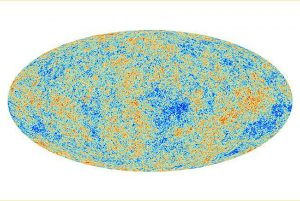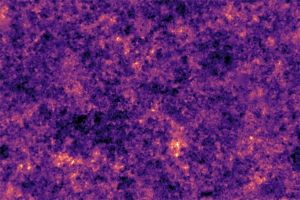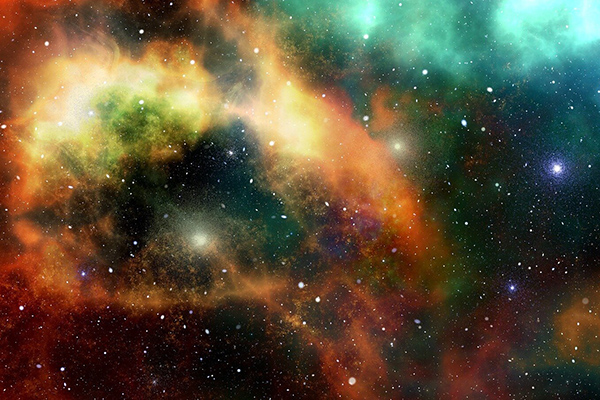The following are some of the most important concepts in current cosmology, based on their importance in the Universe and the possible role they may play in its future collapse.
background radiation

Also known as "cosmic microwave radiation", it is a type of electromagnetic radiation found throughout the Universe at the microwave frequency (160.2 GHz) and which constitutes one of the strongest pieces of evidence in favor of the Big Bang Theory. This is explained because according to this model, at first the Universe was immensely hot and consisted only of electrons, photons and baryons (protons and neutrons). All of this formed a single plasma, but as the Universe cooled, a certain temperature was reached at which the electrons began to combine with the protons of baryonic matter, to form the first hydrogen atoms that would later form stars.
The photons that remained as remnants remained permeating space, but as the Universe expanded, this energy cooled to such a degree that today it only reaches 3 K (-270° C). These photons are also affected by the red shift (an effect that tells us that an object is moving away from us), which is why both the background radiation and the red shift, together, are strong evidence for the explanation of the Universe through Big Bang.
 Background radiation was predicted in the 1940s and then discovered by accident in 1965, when Arno Penzias and Robert Wilson were working on a radio astronomy project and came across radiation that they initially described as just "noise." They soon realized the extremely homogeneous nature of this background radiation, and many other observations have been made since then. Curiously, today It is possible to capture this background radiation ourselves through the reception of our televisions or radio sets., tuned to a channel where there is no signal. The «snow»The "static" seen on a channel without a transmitter, as well as the "static" from a radio receiver, is nothing less than the weak background radiation captured by our receivers.
Background radiation was predicted in the 1940s and then discovered by accident in 1965, when Arno Penzias and Robert Wilson were working on a radio astronomy project and came across radiation that they initially described as just "noise." They soon realized the extremely homogeneous nature of this background radiation, and many other observations have been made since then. Curiously, today It is possible to capture this background radiation ourselves through the reception of our televisions or radio sets., tuned to a channel where there is no signal. The «snow»The "static" seen on a channel without a transmitter, as well as the "static" from a radio receiver, is nothing less than the weak background radiation captured by our receivers.
Dark matter

In this way, a hypothetical matter is known that would constitute the 23% of the total distribution in the Universe. It is hypothetical because it has not been observed, since it does not emit radiation in any range of the electromagnetic spectrum, but nevertheless interacts with ordinary matter in a way that is indirectly detectable. It was predicted from observations made of some galaxies, whose rotation speed would be coherent depending on having a certain mass. However, the observable mass of the galaxies was much lower than expected, so it was deduced that there must be some type of additional matter, not directly noticeable, that was holding such galaxies together and thus preventing them from "tearing apart", so in a certain way it acts as a "glue» of these enormous structures.
It is also thought that dark matter contains much more mass than ordinary matter, which may be given by ordinary neutrinos, as well as baryonic matter that has not yet been detected. Dark matter is not only relevant to the cohesion - and incidentally, the rotation speed of galaxies - but it also plays a role in the formation of structures in the early Universe, specifically in small structures, such as stars. . It also has effects capable of being measured in relation to cosmic microwave radiation.

Dark energy
This is known as a type of hypothetical force that fills all space and would constitute the 68% of the total distribution in the Universe. Its main effect would be to exert a negative pressure that significantly increases the speed at which the Universe expands. In other words, this force is like a "repulsive gravity", accelerating the distancing between objects in the Universe. Like dark matter, dark energy has no defined composition and its nature remains a matter of speculation.
It is thought that dark energy is basically the intrinsic energy to which our Universe is subjected, and it is thought that depending on the way in which this energy affects expansion, it will determine its fate and future collapse. The above is explained because the expansion of the Universe contrasts with the force of gravity, and depending on which of the two is superimposed, different scenarios will occur.


